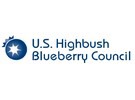In light of yesterday’s announcement by the U.S. Department of Agriculture’s (USDA) Agricultural Marketing Service (AMS) that a majority of eligible producers and importers of record voted in favor of the U.S. Highbush Blueberry Council (USHBC), the USHBC has shared an official statement:
We’re thrilled the industry has voted to continue the U.S. Highbush Blueberry Council’s work through the next five years. With this support, we embrace the confidence you’ve placed in the council and use it to power growth of the industry.
For the growers and importers of record who voted no, we appreciate you as well. We care about the success of all. We promise to continue to reach out, listen to your ideas and concerns and use your feedback to improve and grow our programs.
According to the AMS notice, 84 percent of producers and importers voting in the referendum, who also represent 93 percent of the volume of highbush blueberries grown, were in favor of continuing the program. This represents a 10 percent increase in producers and importers (and 13 percent more volume), of those who voted in favor of USHBC in 2016.
The USHBC was established in 2000 as a Research and Promotion Program under the U.S. Department of Agriculture. Since its launch, the USHBC has been required to hold a referendum every five years, in which eligible producers are asked to vote to determine the continuation of the USHBC.
Future
“The future is bright for blueberries, and we’re looking forward to continuing to work on behalf of our stakeholders to build upon and strengthen our demand-driving programs,” says Kasey Cronquist, president, USHBC.
This year, the referendum took place from October 8-22. Eligible producers who produce 2,000 pounds or more of highbush blueberries domestically, or eligible importers of record who import 2,000 or more pounds of fresh or processed blueberries, voted on the referendum. The referendum passes “if it is favored by a majority of producers and importers voting for approval who also represent a majority of the volume of blueberries represented in the referendum,” as stated in the Blueberry Promotion, Research, and Information Order. This two-part test means both the number of votes and the majority of the volume must approve the continuation of the USHBC.
“Having many growers join me in supporting USHBC means a tremendous amount – it will be the motivation for council and committee members to take our industry to new heights,” said Shelly Hartmann, chair, USHBC.
USHBC also announced details of the approved 2021-2025 Strategic Plan, which explains how USHBC will lead demand-driving programs based on shared resources, research and insights that inspire possibilities and sustain the profitable growth of the blueberry industry. The plan includes expanded, measurable programmatic goals and tactics for five strategic pillars: integrated marketing communications, health and nutrition, industry services, global business development and innovation and technology.
 For more information:
For more information:
U.S. Highbush Blueberry Council
www.ushbc.blueberry.org
www.nabcblues.org
